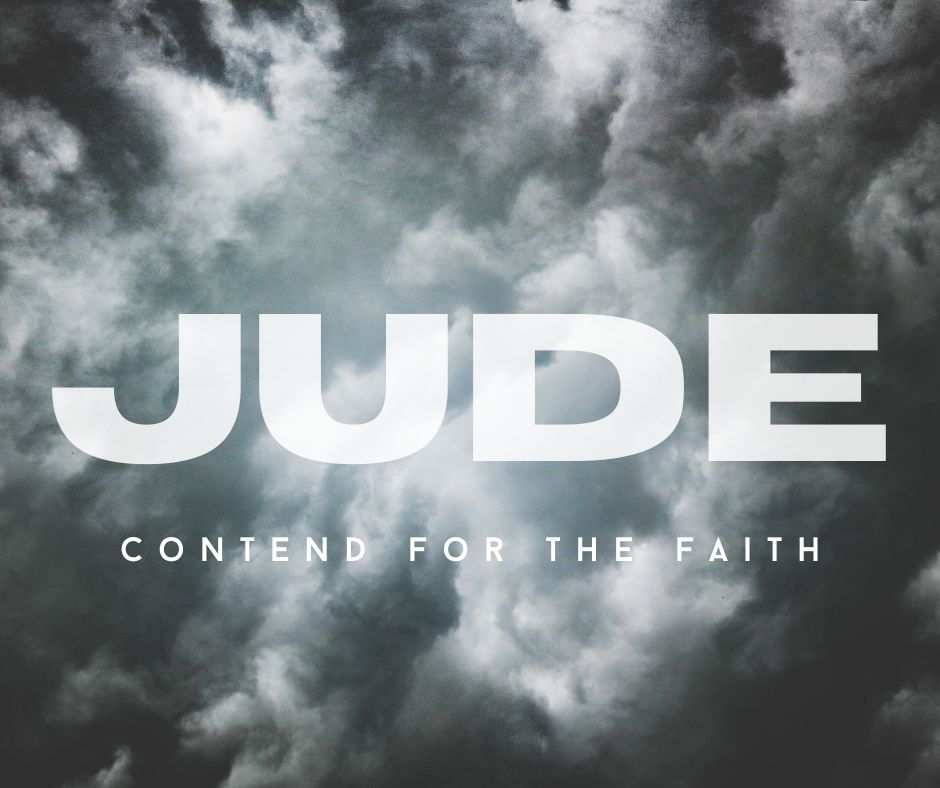Hosanna
Right at the very beginning of the study of the Gospel of Mark, I explained that the outline of the Gospel of Mark is based upon geographical sections. The first half deals with Jesus’ ministry and conflict in Galilee, while the second half (following Peter’s confession) deals with Jesus’ ministry and conflict in Jerusalem. Following Peter’s confession, Jesus is on the road to Jerusalem. Chapter 11 begins Jesus’ ministry and conflict in Jerusalem. Possibly a more correct statement would be that the second half of Mark’s Gospel is not centered around Jerusalem but the temple. Mark records more chronological markers in the last chapters, (Mark 11:11, 12, 20, 14:1, 12, 15:1, 25). People assume that these events occurred within the last week of Jesus’ earthly ministry. Personally, I believe John’s Gospel helps us understand these events explaining that Jesus was around Jerusalem four months before his death and resurrection (John 10:22, 40, 11:54). These events are more likely spread out over months rather than a week (Specifically, all the teachings). John’s gospel can help us understand the timeline of these events, but Mark’s account is quite different from Matthew and John’s accounts which quote Zechariah 9:9.
I. Two houses (vs. 1)
Mark begins this section with several locations. Mark typically uses a change in place as a change in scenery, like a chapter maker. In this instance, this is undoubtedly true. Jesus is no longer heading toward Jerusalem. He is only a couple of miles away. However, Mark mentions an additional three locations in verse one. These locations are significant to this section of text and the following chapters.
a. Bethphage and Bethany
Bethphage and Bethany are located about 2 miles east of Jerusalem (John 11:18). Practically speaking, this was where Jesus would stay during his time at Jerusalem. Around the three feasts that would happen every year, Jerusalem would become a bustling place where many pilgrims would journey to Jerusalem to celebrate. Out of these three feasts, Passover was the busiest time. Jesus’s family made the journey to Jerusalem every year (Luke 2:41). Due to these influxes of crowds, many people would stay in nearby towns, either in inns or with family members. Think of Airbnb in the 1st century. However, there is another reason Mark is mentioning Bethphage and Bethany, that is because of the meaning of these two names; Bethphage means “House of unripe figs,” and Bethany means “House of figs” (Bethany can also mean “house of sorrow”). As we will see in the coming sections is the image of figs and fruit (Mark 11:13, 20, 13:28).
b. Mount Olives
The second important location which helps us understand Mark is Mount Olives. Mark is drastically different from Matthew and John. Mark’s account almost should be called the plummet entry of Jesus, as we will see. Mark also does not directly quote or reference Zechariah like John and Matthew. This, as James Edwards points out, connects to the theme in Mark’s gospel of the servant and secrecy motif. Matthew clearly shows that Jesus is the promised Messiah from the line of David and Abraham, right from chapter one. However, within Mark, besides verse one which Mark states his argument, the people within Mark’s gospel come to very different conclusions about who Jesus is. Mark does not directly quote Zechariah 9:9 in this passage as Matthew and John do. However, Mark references Mount Olives, which is an allusion to Zechariah 14:4,
“On that day his feet shall stand on the Mount of Olives that lies before Jerusalem on the east, and the Mount of Olives shall be split in two from east to west by a very wide valley, so that one half of the Mount shall move northward, and the other half southward.”
One of the main themes of Zechariah 14 is after the coming of the king; there will be a divide. Judgment is one of the main themes in the coming chapters, as we see in Bethphage and Bethany. This again ties back to the parable of the sower (Mark 4). In the end, there are only two outcomes those who bear fruit and those who do not bear fruit.
II. Two disciples (2-7)
Jesus sends two disciples ahead of them to the next village, untie a colt, and bring it to him. Quiet is a simple instruction; however, we are told more details that Jesus tells them a response if anyone asks what the two disciples are doing. James Edwards, a commentator, makes the argument to Jesus staying in this area longer, for the owner to be able to know who the disciples and Jesus are more likely to let them take the colt. Mark does not record Zechariah’s prophesy found in Zechariah 9:9. Mark might not include this because of the majority Gentile audience. John rightly does record that Jesus Disciples did not understand these things (John 12:16). Mark reads more like how the people and even Jesus’ disciples understood the event.
However, we are told specific information about Jesus’ knowledge about the location of the colt, but also that he knew the Old Testament prophecies of the Messiah. Of course, Jesus knew about them; Jesus explains, “You search the Scriptures because you think that in them you have eternal life; and it is they that bear witness about me” (John 5:39). Or, as Luke records Jesus’ Bible study on the road to Emmaus, “[Jesus] interpreted to them in all the Scriptures the things concerning himself.” As we looked at a couple of weeks ago that Jesus knew what he had come to do. The disciples and the crowd might not have understood, but Jesus did. He willingly went to the cross. He did so not riding on a magnificent warhorse but a young colt, a donkey. Christ came as the servant who would give his life a ransom for many (Mark 10:45).
III. Two Hosannas (8-10)
As Jesus rode into Jerusalem on a colt, the people spread their cloaks on the road while others spread leafy branches. Only John’s gospel tells us that they are palm branches. The placement of the garments and branches is significant for two reasons, the first is found in 2 Kings 9, and the second is found in the intertestamental period in history.
a. Jehu
The first is significant because of the story of Jehu, the son of Jehoshaphat (you know the guy who is always jumping). Jehu is anointed king over the Northern Kingdom (Israel). He is anointed by Elisha’s servant, particularly to strike the house of Ahab down and his wife Jezebel because they put to death many of the prophets. Ahab was one of the worst kings in Israel, and that is no small feat. Ahab had led Israel to worship false gods. Baal worship was common practice within the temples. Jehu was anointed king over Israel, and the everyman took their garments under his feet and proclaimed, “Jehu is King” (2 Kings 9:13).
b. Judah Maccabee
About 135 years before Jesus’ earthly ministry, there was a revolution called the Maccabean revolt. During this time, the Maccabean family began a revolt against the Greek Empire (Seleucid). This was a guerilla movement that was fought in the countryside. (Remember Mark 6 and the feeding the 5000). The Maccabean brothers, led by Judah Maccabee, and their army of misfits fought because the Seleucid empire made the site of a syncretic Pagan-Jewish cult. In 164 BC, the Maccabees conquered Jerusalem; they cleansed the temple from pagan worship. Jewish worship that was once banned was made legal again. This is the origins of Hanukkah. The revolt continued as they fought for independence. You can find out more about this in the books called first and Second Maccabees. I tell you all of this background because it records in 1 Maccabee 13:51, “On the twenty-third day of the second month, in the one hundred seventy-first year, the Jews entered it with praise and palm branches, and with harps and cymbals and stringed instruments, and with hymns and songs because a great enemy had been crushed and removed from Israel.”
c. Psalm 118
The crowd has these two historical views in mind as they lay their garments and branches on the ground before Jesus. They saw Jesus as a new Jehu or Judah Maccabee coming to rid Jerusalem of the evil governors. To overthrow the new Ahab and Seleucid empire. The crowd cries out, “Hosanna,” which is a transliteration from Psalm 118:25, “save us we pray.” They then proceed to call quote Psalm 118:26, “Blessed is he who comes in the name of the Lord! We bless you from the house of the Lord.” Their reference to our father David is not found in Psalm 118 nor any other messianic texts, so we should be careful to give it the total weight, such as the “Son of David.” Their cry for salvation was not one of their spiritual need to be saved from their sin but one of political salvation from the Roman empire. They did not understand the temple’s purpose as a shadow of Christ. They did not understand Psalm 118:22, which says, “The stone that the builders rejected has become the cornerstone” (cf. Mark 12:10).
IV. Two different responses (11)
Usually, this text will have the heading of triumphant entry. As pointed out before, this is a correct heading for the other gospels. Matthew says the whole city was stirred up (Matt 21:10). Luke states that rocks would sing praises if the crowd stopped (Luke 19:40). John explains that the crowd gathered because Jesus had raised Lazarus (John 12:18). Within the gospel accounts, the others highlight the excitement and buzz in the crowd and city. However, Mark ends on a deflated note. The anti-climatic response of the crowd. One moment they praise him at the gate but vanish by the time he gets to the temple. They wanted Jesus to change the capital, not the temple. They thought they were Bethany, but in fact, they were Bethphage, without any fruit. James Edwards helpfully points out that they are like the seed sown in shallow soil that receives the word with Joy but in the end has no roots and therefore withers away. Matthew Henry summarizes this faded joy, “Christ, thus attended, thus applauded, came into the city, and went directly to the temple. There was no banquet of wine prepared for his entertainment, nor the least refreshment; but he immediately applied himself to his work, for that was his meat and drink.”
How quick we are to applaud and praise Christ yet abandon him within moments. We seek the peace that is comprehendible. We pray for a better job, a healthier marriage, a bigger checkbook, less stress, and anxiety. We cry out, Hosanna, Save Us we pray, but we want to be saved from the worldly problems surrounding us, not the sinful heart within. We want salvation here and now but not to die from our sin. We pray for a new Jehu or Judah Maccabee to rise and save us. Yet we don’t need Jehu or Judah. We need Jesus, the stone that is rejected. Yet we want Jesus on a donkey rather than the bloody Jesus hung upon a tree. We praise him on Monday but neglect him on Friday. We should cry out, Hosanna, Save us, we pray.





